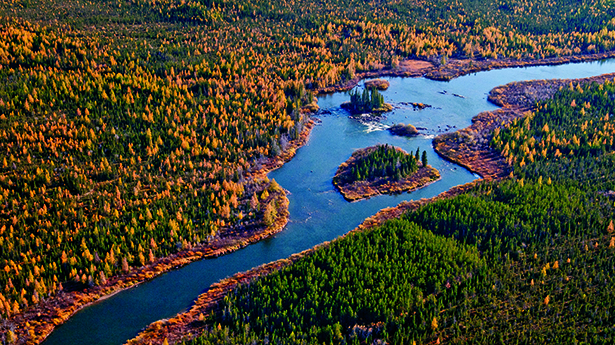Thanks to a landmark conservation deal passed in Canada on February 1, 2016, 9.1 million acres of irreplaceable temperate forest in British Columbia is now protected. To put that in perspective, that’s half the size of Ireland. That’s over twice the size of Belize. That’s 9,100,000 football fields.
The Great Bear Rainforest is home to 26 First Nations communities, 1,000-year-old cedar trees, grizzly bears, rare all-white spirit bears, and Sitka spruce trees. Spanning from Vancouver to Alaska, it is just a fraction of the largest coastal temperate rainforest in the world.
Mining and timber companies have illegally pillaged this old-growth forest for decades, making huge sums of money off of resources that do not belong to them. Companies have cut down large swaths of old growth forests, trespassed on First Nations’ land and destroyed wildlife habitat.
In 2001 indigenous and community organizations organized with the goal of saving the Great Bear Rainforest—work that Global Greengrants supported. From peaceful protests to land surveys ensuring that timber companies aren’t trespassing on First Nations land, grantees helped build a grassroots movement to save what’s left of this pristine ecosystem. A massive boycott against these timber companies built momentum for the movement and shrunk profits. Pressure against timber companies was increasing.
The Great Bear Rainforest agreement has been a long time in the making. After five years of grassroots activism, the timber companies, Canadian government and First Nations were at the negotiating table. After a decade at that table, the deal was reached in February 2016.
Of course, the struggle for recognition of First Nations rights and environmental protection continues.
But let’s enjoy the moment: No longer will First Nations peoples in this part of the Great Bear Rainforest wonder when their land will be illegally grabbed by the timber industry. No longer will environmentalists worry that their children will never see the spirit bear in its natural habitat. No longer will consumers be concerned that their products were made by cutting down centuries-old trees. This is a wonderful victory—and we are so proud that our grantees played a role in making it happen.
***
Photo Credit: Alan Lissner

